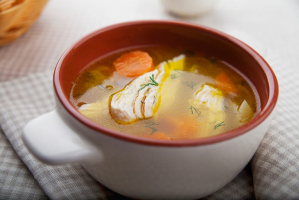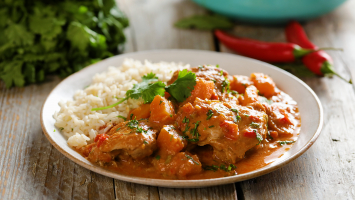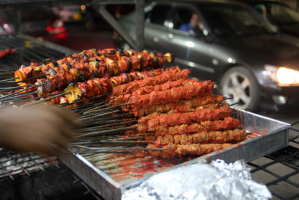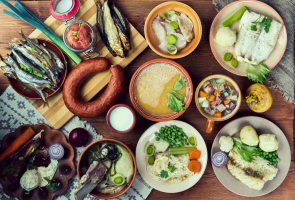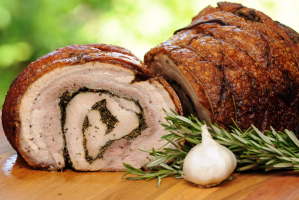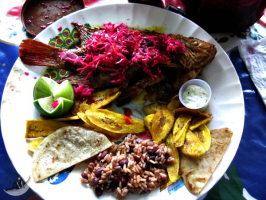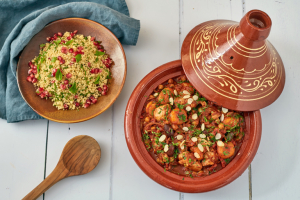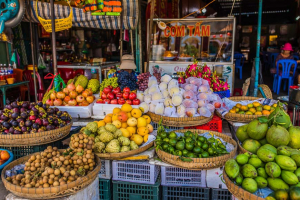Top 10 Best Foods to Try in Poland
Polish cuisine is frequently an unexpected highlight of many people's trips, owing to the country's gastronomic culture, which rivals that of other European ... read more...nations. Many of the best Polish cuisine are rich, meaty, and served in gut bursting amounts, and are packed full of flavor and calories. Here are some of the best foods to try in Poland.
-
Pierogi are undeniably the most popular Polish cuisine. Pierogi is already plural in Polish (pieróg is single), but folks in the United States call them pierogis, which makes no sense. They are thinly rolled-out dough stuffed with savory or sweet contents. They can be served as an appetizer, a main course, or a dessert.
The most popular fillings are meat, sauerkraut with mushrooms, spinach, buckwheat, potatoes with fried onions, pepper, and cottage cheese called Ruskie, which means "Ruthenian pierogi" (not "Russian," as they are frequently mislabeled), sweet cottage cheese with raisins and seasonal fruit (blueberries, strawberries, and cherries), buckwheat, sweet cottage cheese, or boiled potatoes with fried onions (called Russian dumplings). Pierogi can be boiled, baked, or fried, but in Poland, they are customarily cooked with butter and onions on top.
They can be found almost anywhere in Poland, from street food stands to fine dining establishments. Pierogarnia Mandu in Gdansk is a true pierogi kingdom, with over 35 kinds to choose from. After eating one of these delectable stuffed dumplings, you're likely to need more.
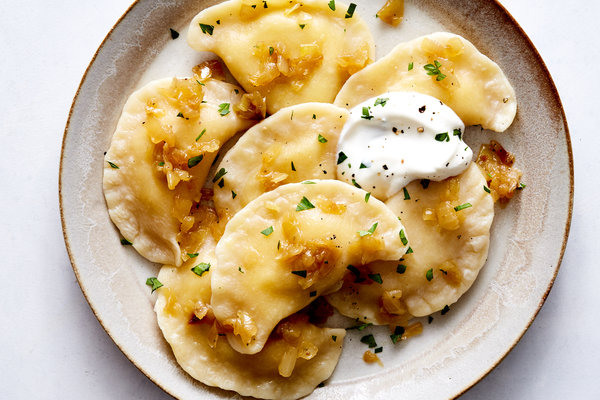
Pierogi (photo: https://cooking.nytimes.com/) 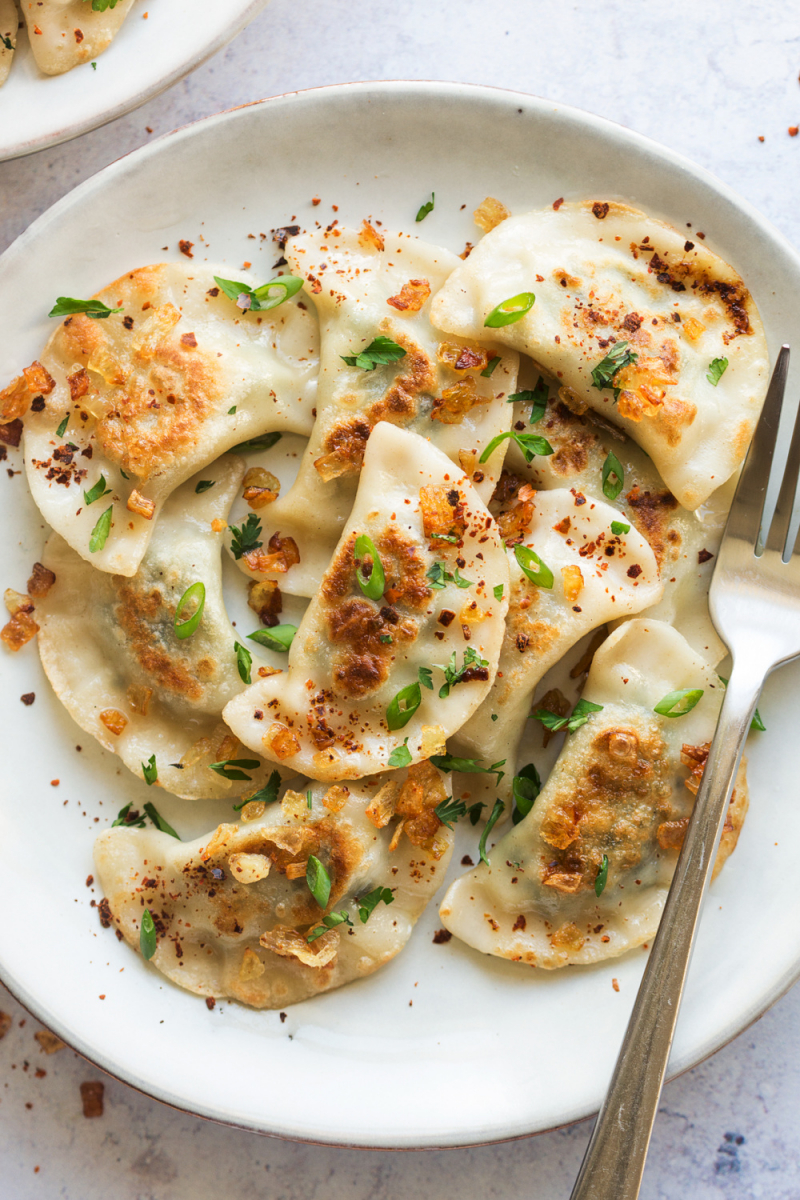
Pierogi (photo: https://www.lazycatkitchen.com/) -
Bigos - a hearty stew cooked with several sorts of chopped meats, sauerkraut, and shredded raw cabbage that is frequently translated as "hunter's stew." This cabbage-based stew is a must-have on every Polish family's Christmas table.
Bigos is a famous one-pot dish that was once cooked over an open fire and consisted of whatever meat hunters brought home, primarily wild boar or deer. It normally includes of both fresh and fermented cabbage, various types of meat sliced into chunks, various types of Polish sausages, onions, dried wild mushrooms, and a multitude of herbs and spices like as bay leaves, cloves, nutmeg, marjoram, and others. A diversity of meats is regarded necessary while cooking bigos - the more types, the better.
It's a meal in and of itself, best served with thick slices of crusty sourdough bread and butter. Bigos improves with age, so eat it on the third day, after it has been warmed and cooled several times.
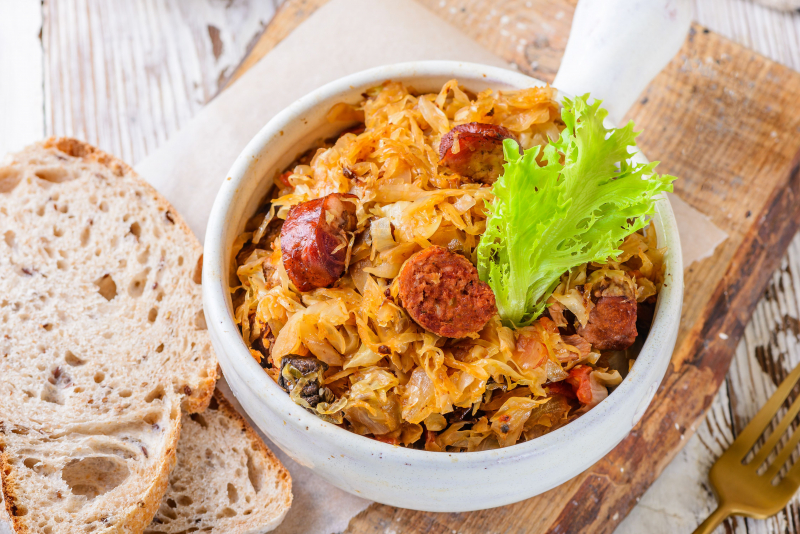
Bigos (photo: https://www.thespruceeats.com/) 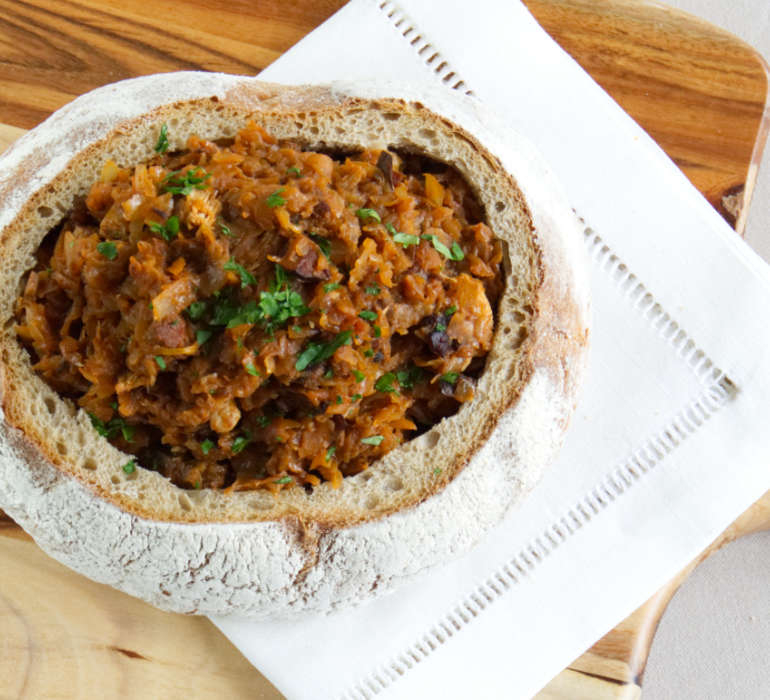
Bigos (photo: https://cooking-the-world.com/) -
A list of the best Polish dishes would be incomplete without these potato pancakes. Thousands of Polish households relied on placki ziemniaczane as a substitute for bread, which was scarce amid Poland's economic troubles, and they've since become vital to the country's culinary legacy.
The classic Polish potato pancakes are a staple comfort meal enjoyed throughout the country. Everyone has their own family recipe, but the basic ingredients are usually potatoes, grated onions, eggs, and flour, which are flattened and fried into savory pancakes. They're served with a number of condiments, including savory options like sour cream or gravy, as well as sweet options like apple sauce or sugar.
Visitors to Krynica Zdroj, a scenic resort town in the Beskid mountains, can choose for a placki ziemniaczane tasting session at Karczma Cichy Kacik, a local culinary institution.
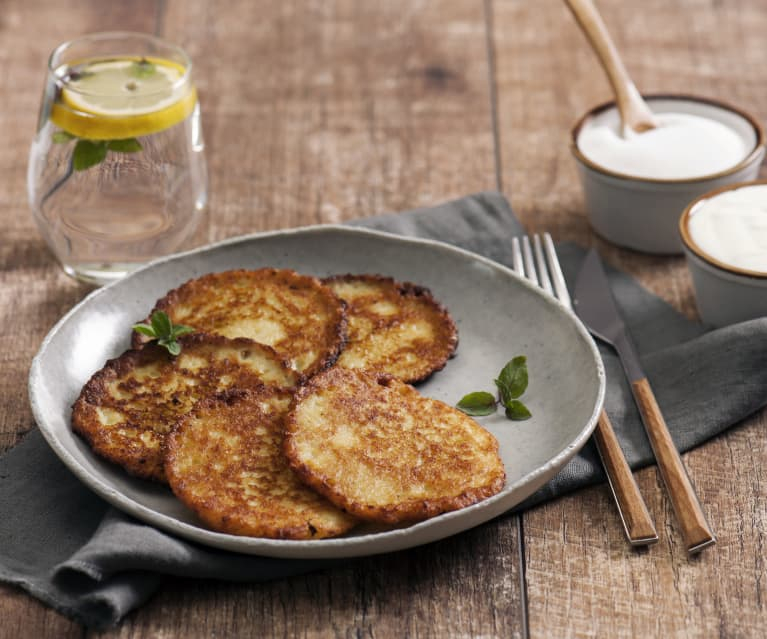
Placki ziemniaczane (photo: https://cookidoo.international/) 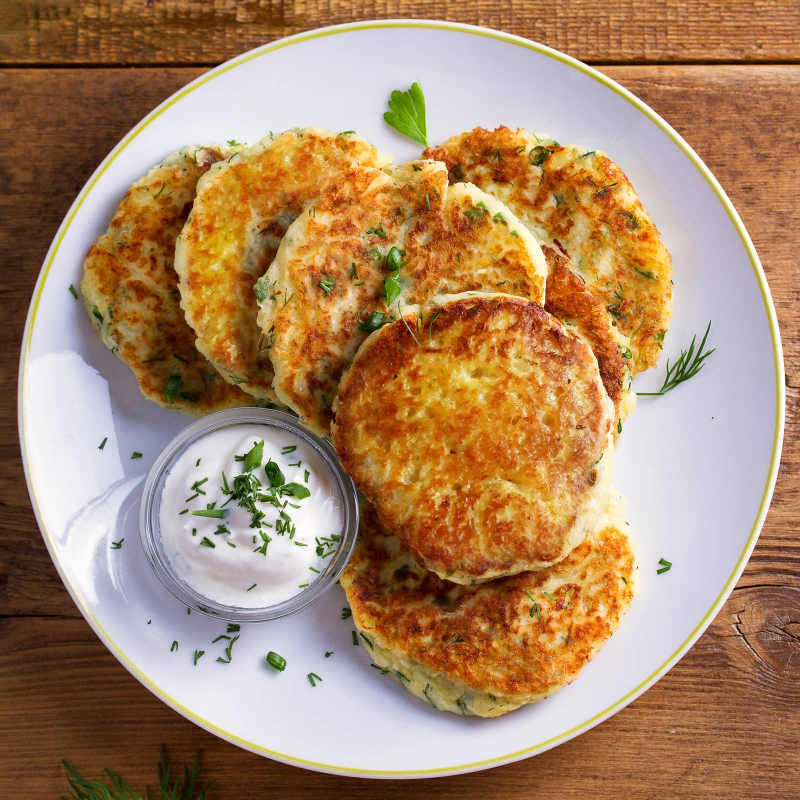
Placki ziemniaczane (photo: https://www.polonist.com/) -
Borscht, an Eastern European sour soup prepared with beets and eaten hot or cold, may be familiar to you. The Polish word barszcz means borscht, however, this soup is not the same. Unlike typical borscht, which is an opaque purple with meat, tomatoes, and cabbage, barszcz is a basic beet broth that is relatively translucent, whether red or white in color.
Traditional barszcz is frequently made with a kwas or sour starting; some people even chill this fermented starter and drink it, much like kombucha. If the soup is red, the kwas was made with fermented beets (kwas buraków). White barszcz was made with fermented rye flour or rye bread (ur or kwas chlebowy).
This simple, clear red Polish beet soup recipe skips the sour starter and instead gets the desired sourness from lemon juice or vinegar. This soup is delicious when served hot with boiled potatoes or cold with rye bread.
For Polish Christmas Eve dinner (known as wigilia), this meatless soup is frequently served with mushroom uszka ("small ear" dumplings). When served in this manner, the soup is known as barszcz wigilijny.
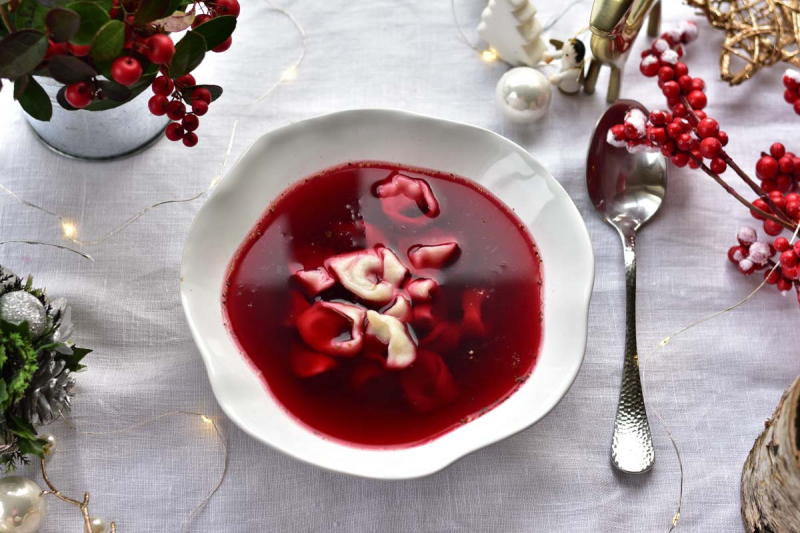
Barszcz (photo: https://www.everyday-delicious.com/) 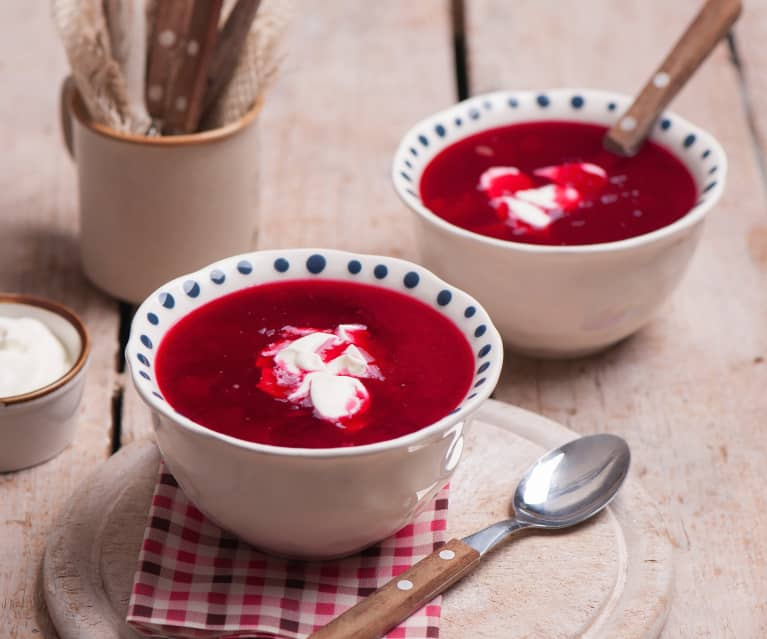
Barszcz (photo: https://cookidoo.com.cn/) -
A cabbage roll is one of the best Polish foods you can taste. Gołąbki translates to "small pigeons," even though these cabbage rolls have nothing to do with birds. Cabbage leaves are typically wrapped around a filling of minced pork shoulder and rice. The rolls are then cooked in stock before being served with either clear broth or tomato and sour cream sauce. This hearty dish is often served for lunch or an early dinner. It's one of the delicacies that Polish immigrants undoubtedly brought to the United States.
There are also other versions. Gołąbki can be packed with chicken, mutton, or even made vegetarian by using a potato, buckwheat, and lentil foundation. These cabbage rolls are easy to devour, with a wonderful aroma and delicious flavor assaulting you from the first bite. You'll need at least a few!
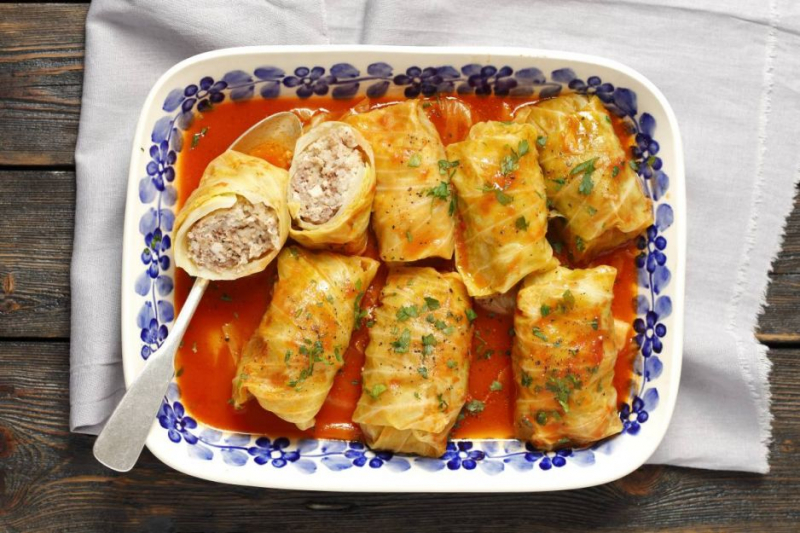
Gołąbki (photo: https://www.mojegotowanie.pl/) 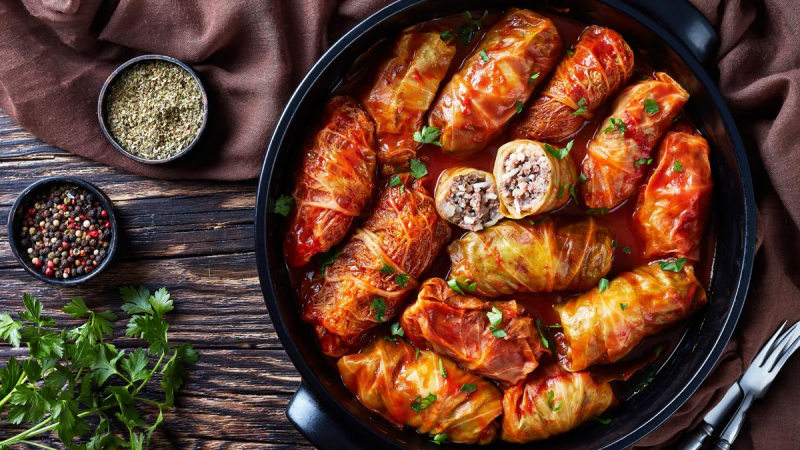
Gołąbki (photo: https://polki.pl/) -
This classic recipe for Polish Pączki (POHNCH-kee), or doughnuts, is a pre-Lenten indulgence. Fat Tuesday, also known as Shrove Tuesday, Mardi Gras, and Pączki Day in the United States, is the day before Lent begins. However, Fat Thursday (the final Thursday before Lent) signals the end of Carnival season, and this is when fried dishes like Pączki are consumed with gusto in Poland, where it is known as Tłusty Czwartek.
To avoid food waste, making them was a way to use up supplies like butter, sugar, eggs, fruit, and fat before the dietary restrictions of Lent began.These fried yeast dough circles are generally filled with rosehip, prune, apricot, strawberry, raspberry, or sweet cheese filling. Some people make these puffy dough balls without a filling and roll them in granulated sugar, which is as tasty. Whatever method you use, remember that Pączki is sweeter and richer than conventional doughnuts.

Pączki (photo: https://sprawdzonakuchnia.pl/) 
Pączki (photo: https://www.chicagomag.com/) -
This distinct and humble soup is popular in many West Slavic countries, but the Polish version is commonly consumed during Easter. At first glance, Żurek may appear to be just another fermented rye soup, but it is considered a national treasure by the Poles.
Every family has its recipe for Żurek, as is the case with practically all national dishes. While there are various regional variations of the meal, the most well-known version includes sour rye flour, potatoes, plenty of vegetables, and plenty of meat. The centuries-old soup is traditionally served with a hard-boiled egg. Try Żurek w chlebie, which is the same soup but served in bread. It's creamy, smoky, and garlicky, and it's not as sour as fermenting implies; it's more of a rich, savory sour flavor.
Smakolyki Restaurant in Krakow, popular among locals, delivers delicious Żurek in a cozy atmosphere.
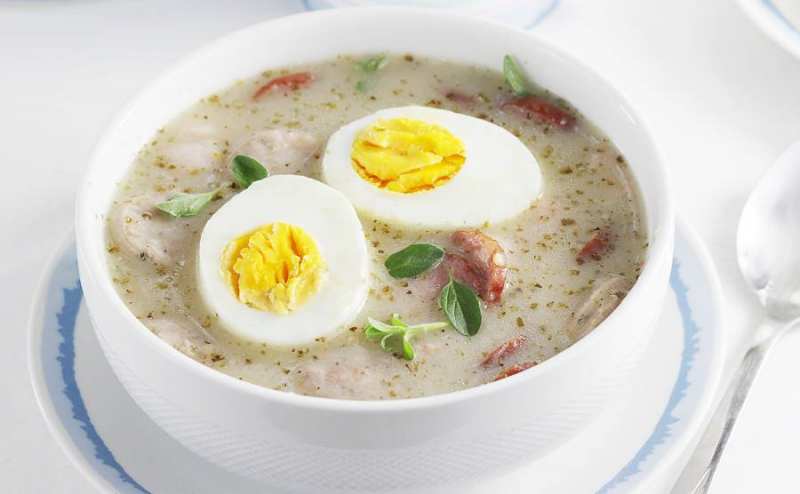
Żurek (photo: https://aniagotuje.pl/) 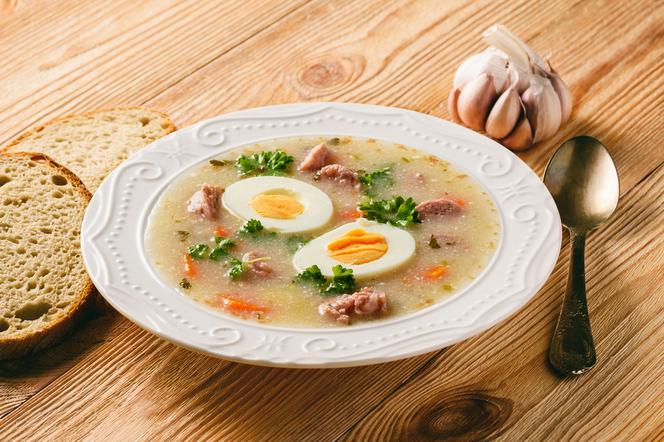
Żurek (photo: https://beszamel.se.pl/) -
Flaki, the Polish version of a renowned beef tripe soup, may not sound particularly pleasant, but it is incredibly important to the country. Although identical recipes may be found in nearby Ukraine, Belarus, and Germany, the soup has been popular in Poland since the 14th century and was thought to be King Jogaila's favorite dish.
Flaki not only provides insight into the rural beginnings of Polish cuisine but also demonstrates that the edible lining from a cow's stomach can form part of a delicious meal if cooked properly.
This soup gets its name from its major component, thin cleaned pieces of beef tripe. It is typically made with a broad variety of vegetables and aromatic herbs, but the recipe varies greatly throughout regions of Poland. Pyzy, Flaki Gorace! in the Praga neighborhood is the place to go for Warsaw's rendition of Flaki.
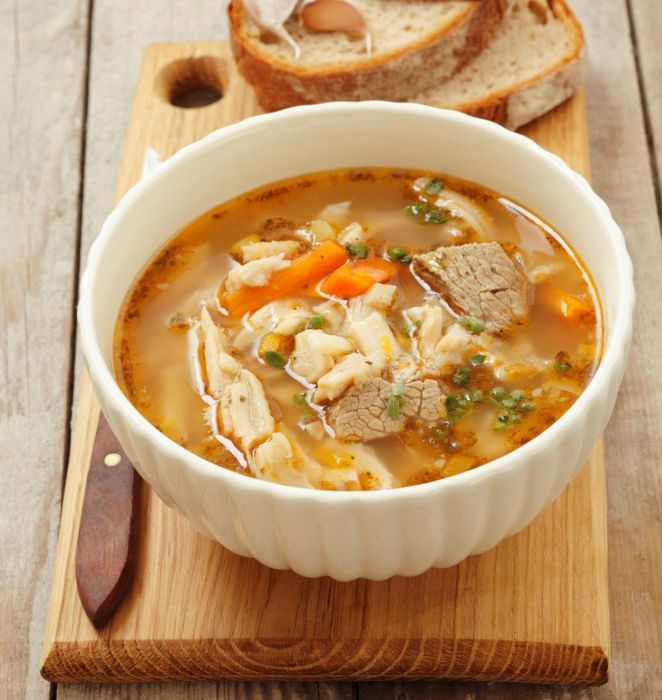
Flaki (photo: https://www.mojegotowanie.pl/) 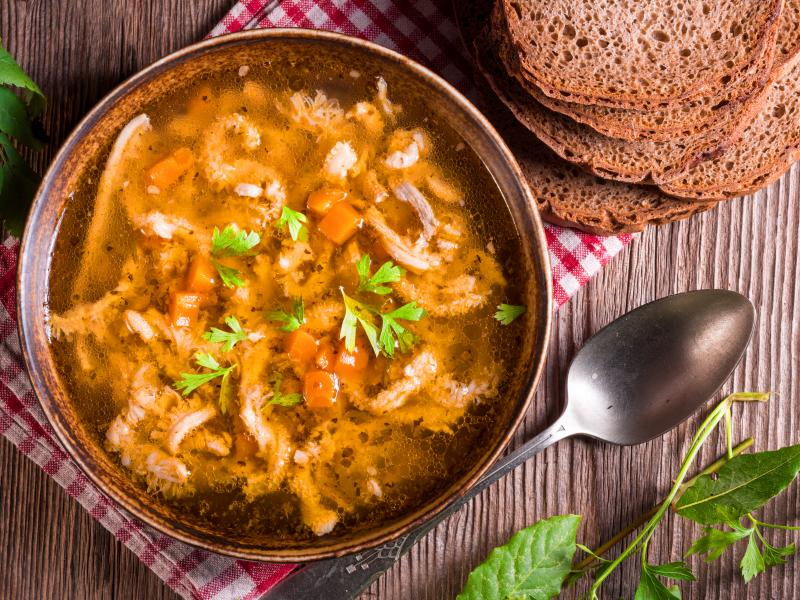
Flaki (photo: https://polki.pl/) -
Who doesn't enjoy a delicious classic cheese? Oscypek is a sort of smoked cheese made from salted sheep's milk that is only found in Poland's Tatra Mountains. They're created by smoking them in a wooden oven or hut known as a Bacowska. In Venice, only gondoliers are permitted to ride gondolas, and only "bacas," traditional shepherds and Tatra cheesemakers, are permitted to manufacture oszczypek.
The cheese is available practically everywhere in the country, from the resort town of Zakopane, sometimes known as Poland's "winter capital," to Krakow, the capital of the Lesser Poland Voivodeship, which includes the Tatra Mountains. Oscypek can be used as an ingredient in meat meals and salads, or it can be consumed as a snack on its own. Then it's grilled and served with cranberry sauce.
Grilled oscypek with cranberry jam, available from most street stalls in Poland, is a must-try.
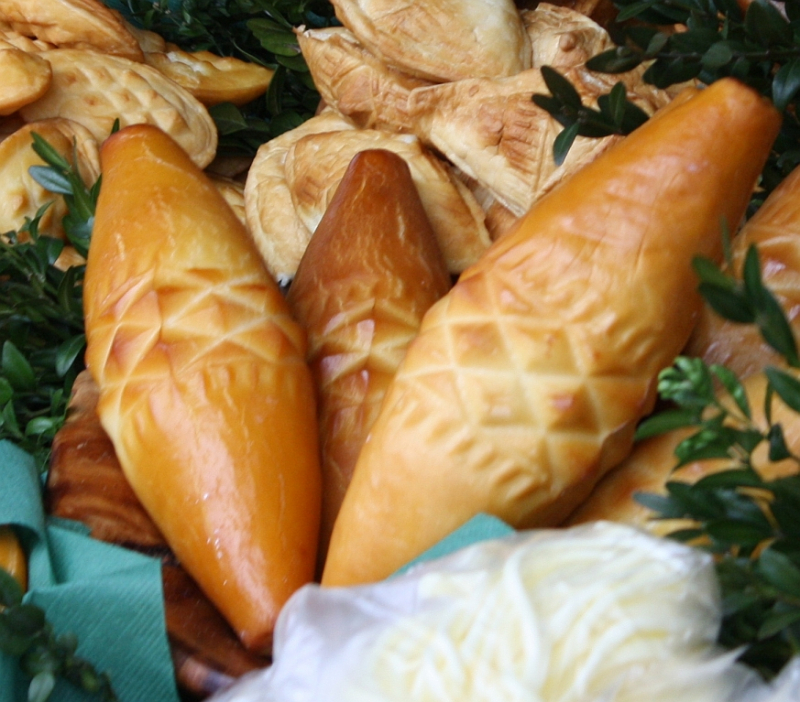
Oscypek (photo: https://www.wikiwand.com/) 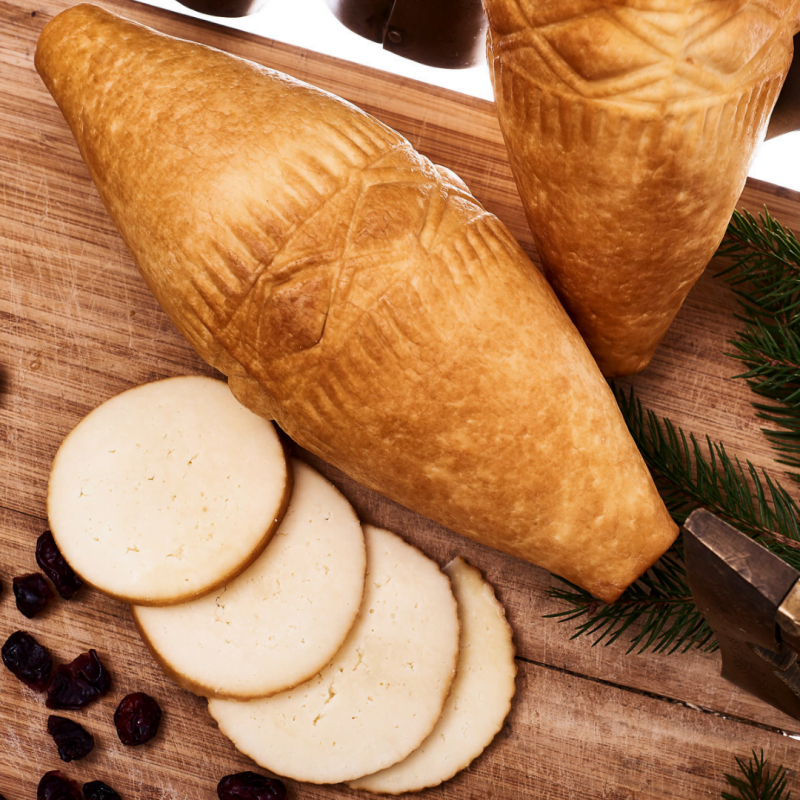
Oscypek (photo: https://www.krupowki.pl/) -
The word Kiełbasa (pronounced keel-BAH-sah) means "sausage" in Polish. It goes well beyond the huge smoked links often found vacuum-packed in supermarkets. Polish sausage can be smoked, fresh, or cured, and can contain pork, veal, or any combination of meats; some are made from hog shoulder, while others use leftovers or ground meat. Garlic, juniper, and marjoram are common flavor ingredients in Kiełbasa. Traditionally used in Polish cuisine, ingredients can be boiled, baked, grilled, or prepared in a variety of other ways, and there are numerous delicious dishes to try.
The most popular types of Kiełbasa are kabanosy (thin, dried pork sausage with caraway seeds), krakowska (thick, smoked sausage from the Cracow region with pepper and garlic), and biaa (white sausage that is sold uncooked and is often used in soups).
In general, Kiełbasa is a low-cost protein, which is why it has long been a mainstay in the Polish diet.
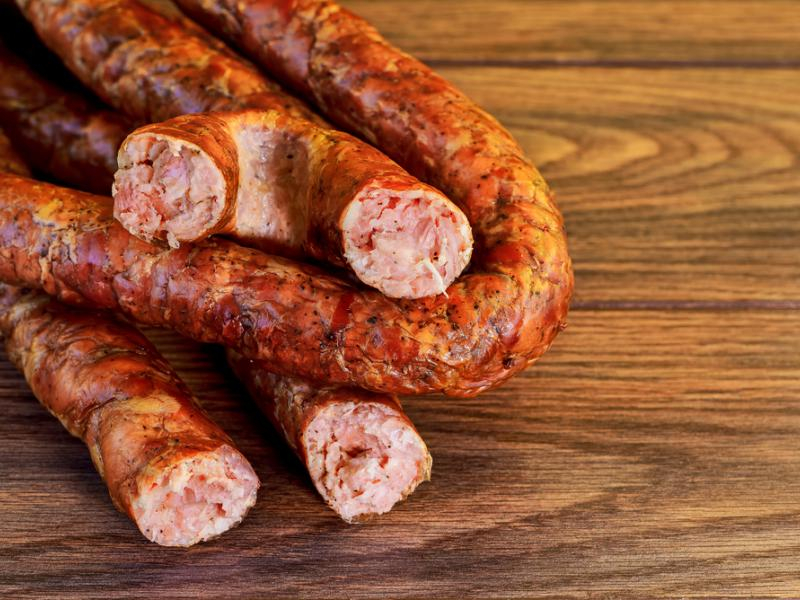
Kiełbasa (photo: https://www.ekologia.pl/) 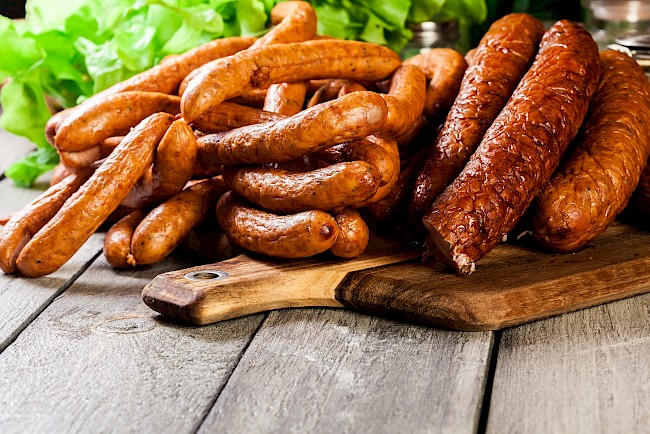
Kiełbasa (photo: https://wszystkoojedzeniu.pl/)












